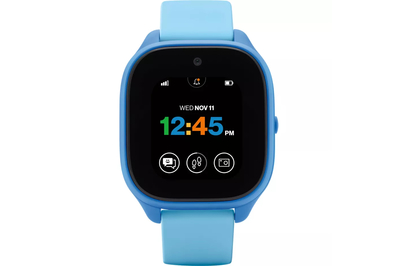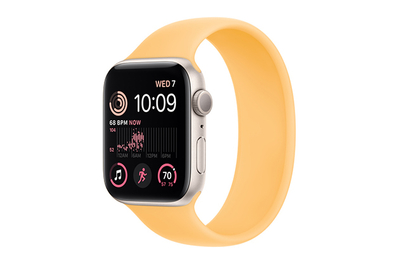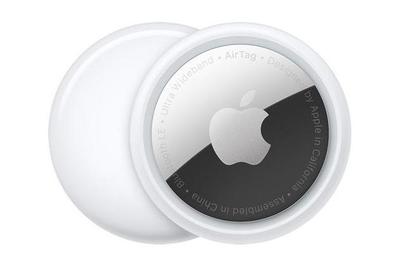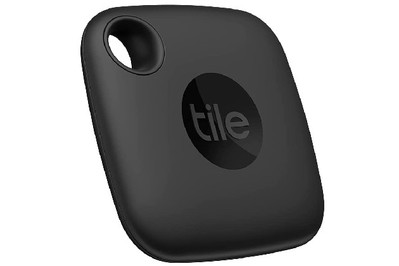When my then-10-year-old daughter had to take a bus to another town for soccer practice, she packed her soccer ball, sunscreen, a snack, a water bottle—and a GPS tracking device.
Tracking her assured me that she had caught the bus and reached her destination 30 minutes away. I could confirm her location unobtrusively, without having to call or interrupt her. It also gave her some freedom: After school, she and her teammates walked the half mile to the bus stop on their own.
GPS tracking can be a handy feature as you allow your kids to have more independence, or it can simply provide peace of mind in special situations, such as during a visit to a large, crowded amusement park. With some gadgets, you can also set up notifications that alert you if your child has left or arrived at a particular location.
Typically, the parent or caregiver uses a smartphone app to track the child, with a pin on a map showing the child’s approximate location. It’s not perfect—sometimes the location is off, or the system is slow to update with the latest information. (Once, I had a device on each kid, and even though they were together, their locations didn’t load at the same time, so it looked as if they were in different places.) And if your child is somewhere remote or in a place where service is spotty, tracking tools can be especially unreliable. Of course, we’re assuming that the device is charged and that it stays with your child. If it runs out of battery or your child leaves it behind, all bets are off.
Keep in mind, though, that it’s one thing to make sure that your elementary-school-age child catches the right bus and makes it home safely. It’s another to monitor an older teen or a young adult on their way to class or a job. As your child ages, you should pull back and give them more privacy and independence—allowing them to get lost, miss their ride, arrange a carpool, and navigate somewhere safely on their own.
“Our job is to put ourselves out of a job,” says Julie Lythcott-Haims, author of How to Raise an Adult. “If we always swoop in, we’re depriving our kid of being the problem solver in their life.”
Experts also warn that constant surveillance can harm your relationship with your child, triggering anxiety, eroding trust, and pushing them to be more secretive. You don’t want to rely solely on technology to inform you of where your child has been; you want your child to tell you. “The greatest data will come from having a close interpersonal relationship with your child,” Lythcott-Haims says. “Don’t let technology get between you and them.”
If you do track your child’s location, don’t do so secretly. Instead, have a conversation and let them know that you’ll be monitoring their whereabouts.
Knowing those caveats, you can track your kid in a few ways:
With a smartphone
Smartphones come equipped with support for GPS, which enables you to track the phone easily. If you’ve already decided to give your kid a smartphone, we recommend setting up parental controls. These settings link your phone with theirs so that you can monitor your child’s location and receive notifications if your child leaves or arrives at a particular spot.
Parental controls can also help you manage how much time your child spends on their phone—which is of particular concern to many parents in light of recent advisories about screen time, access to social media, and its impact on young people’s mental health.
Smartphones made specifically for kids, such as the Gabb Z2, a pick in our guide to the best smartwatches and first phones for kids, work similarly to a regular smartphone but add the ability for a parent or caregiver to track the phone’s location through a dedicated app. Unfortunately, though, because most flip phones, like our pick, the Alcatel SmartFlip, don’t support GPS or have the ability to download apps, you can’t track your child’s location with one.
With a smartwatch
Like smartphones, our picks for kids smartwatches come with GPS support and their own phone number. They also require cellular service, though it doesn’t have to be on the same carrier as yours. We’ve found smartwatches to be just as reliable as smartphones in tracking a person’s location (that is, with the same concerns as a smartphone, such as whether the watch’s wearer is in an area with dependable cell phone coverage). But smartwatches can be slower to refresh, or may require manual refreshing, for the latest, “live” location.
With Verizon’s Gizmo Watch 3, you need to download the GizmoHub app (iOS, Android). Through the app, you can monitor the watch’s location and set up alerts indicating when your child arrives or leaves a particular location, such as home or school. Kids can also use the smartwatch to text or call you, as well as to “check in” and notify you of their location.
Note that our smartwatch pick for older kids, the Apple Watch SE, is available with two types of connectivity, GPS alone or GPS and cellular. If you want to keep track of your child’s location at any time, you need the version that is equipped with both GPS and cellular service. Your child also needs their own Apple ID. Once their Apple Watch is connected to your device through Family Setup, you can keep an eye on the watch’s location in the Find My app (under either Find People or Find Devices).
With other GPS or Bluetooth tracking gadgets
One of the most inexpensive ways to monitor your child’s location—and a method that some parents certainly use—is attaching a Bluetooth tracker such as an Apple AirTag or a Tile Mate to your child’s clothes, shoes, or backpack. (You can even find cute cases, holders, and fasteners for this purpose.)
These trackers cost only about $25 each, and unlike a smartphone or smartwatch, they don’t require a monthly subscription or regular charging.
But as we point out in our guide to the best pet trackers, Bluetooth trackers have limitations. Most notably, Bluetooth trackers don’t support GPS; instead, they rely on being close to an iPhone or smartphone (within about 15 to 30 feet for an AirTag) for you to be able to pinpoint their location. If no Apple devices are nearby to pick up the AirTag’s Bluetooth signal, its location won’t update in the Find My app. Likewise, if the Tile Mate isn’t in the range of Tile’s network (which includes partners such as Amazon), its stated location won’t be current.
Apple also says that AirTags aren’t meant to track people, and it introduced security precautions to prevent stalking or unwanted tracking (such as following a spouse’s every move). Your AirTag will randomly chime if it is out of range of your iPhone. If your AirTag appears to be following someone, a notification will also pop up on that person’s iPhone, with an alert indicating that an AirTag has been “found moving with you.” All of this means that if you send your child to school with an AirTag, it may chime in the middle of class, and teachers and staff may also be alerted that someone (namely, your child) is following them.
A hybrid option that avoids those concerns is the Jiobit Smart Tag (both Jiobit and Tile are owned by Life360, a location-sharing app), which is made for parents and caregivers of children, older adults, and pets. About the size of a small egg but flat, the Jiobit tag is another small wearable that you can attach to your child’s backpack or clothes. But unlike an AirTag or Tile Mate, it supports GPS, so it can track your child’s location wherever they are, even when they are not near another smartphone. It can also send alerts when your child has left or arrived at a particular location.
Like a kids smartwatch, the Jiobit tag requires a monthly subscription (about $10 to $20 per month) and needs regular charging. It doesn’t cost much less than a kids smartwatch, and it’s much more limited in functionality. For some parents, that may be exactly the appeal.
Unlike a kids smartwatch, the Jiobit tag doesn’t offer you any way to communicate with your child, though your child can press a button to alert you that they need help or attention. (This is a feature that you must turn on, including enabling notifications on your phone.) Once the child alerts the parent in this way, the parent can trigger the SOS mode from the app, and 911 will track the location of the Jiobit tag. SOS mode may be a reassuring feature to have for emergencies, though in our case, our child just wanted to alert us to say hi.
This article was edited by Rachel Hurn and Kalee Thompson.








